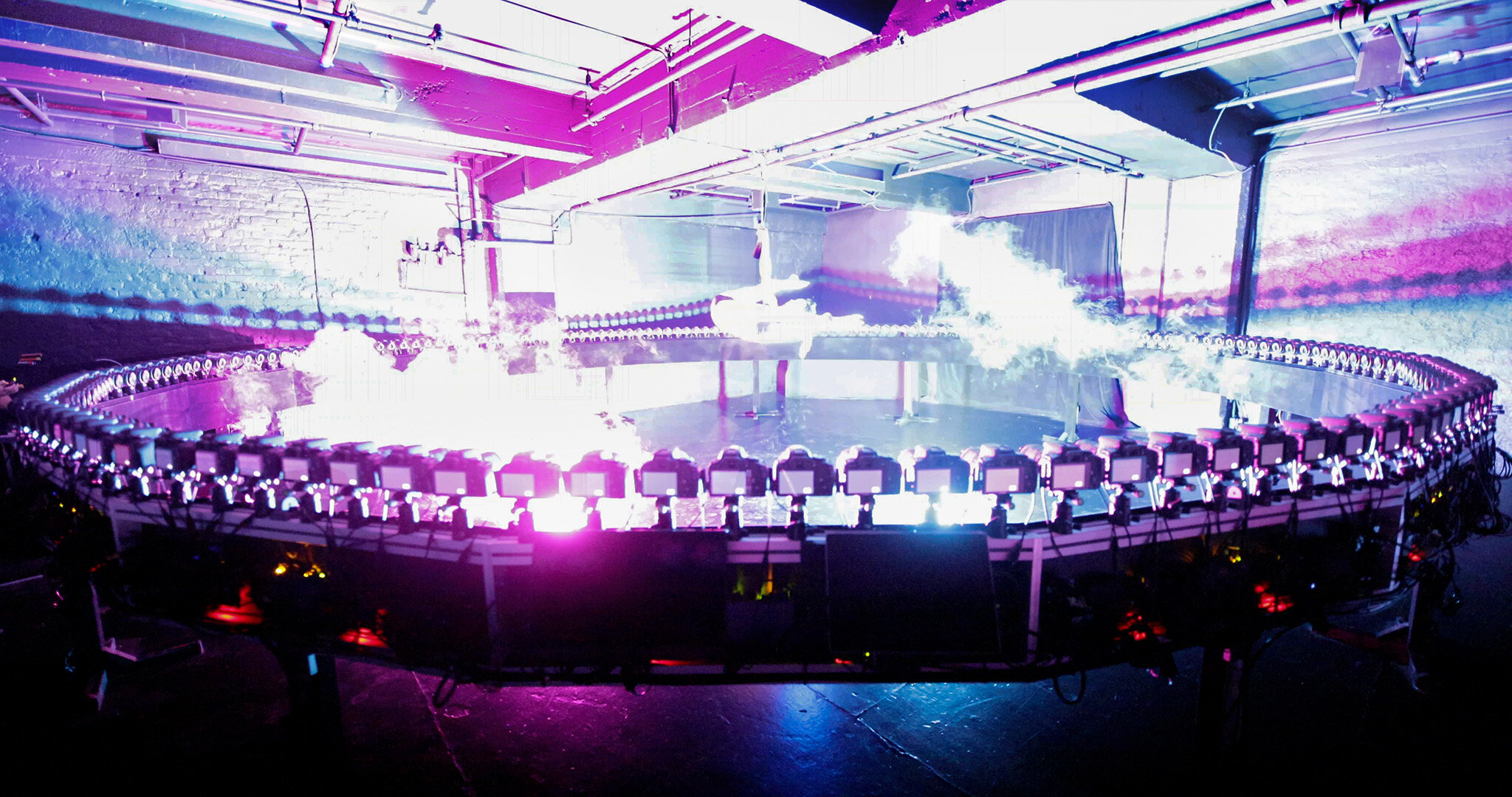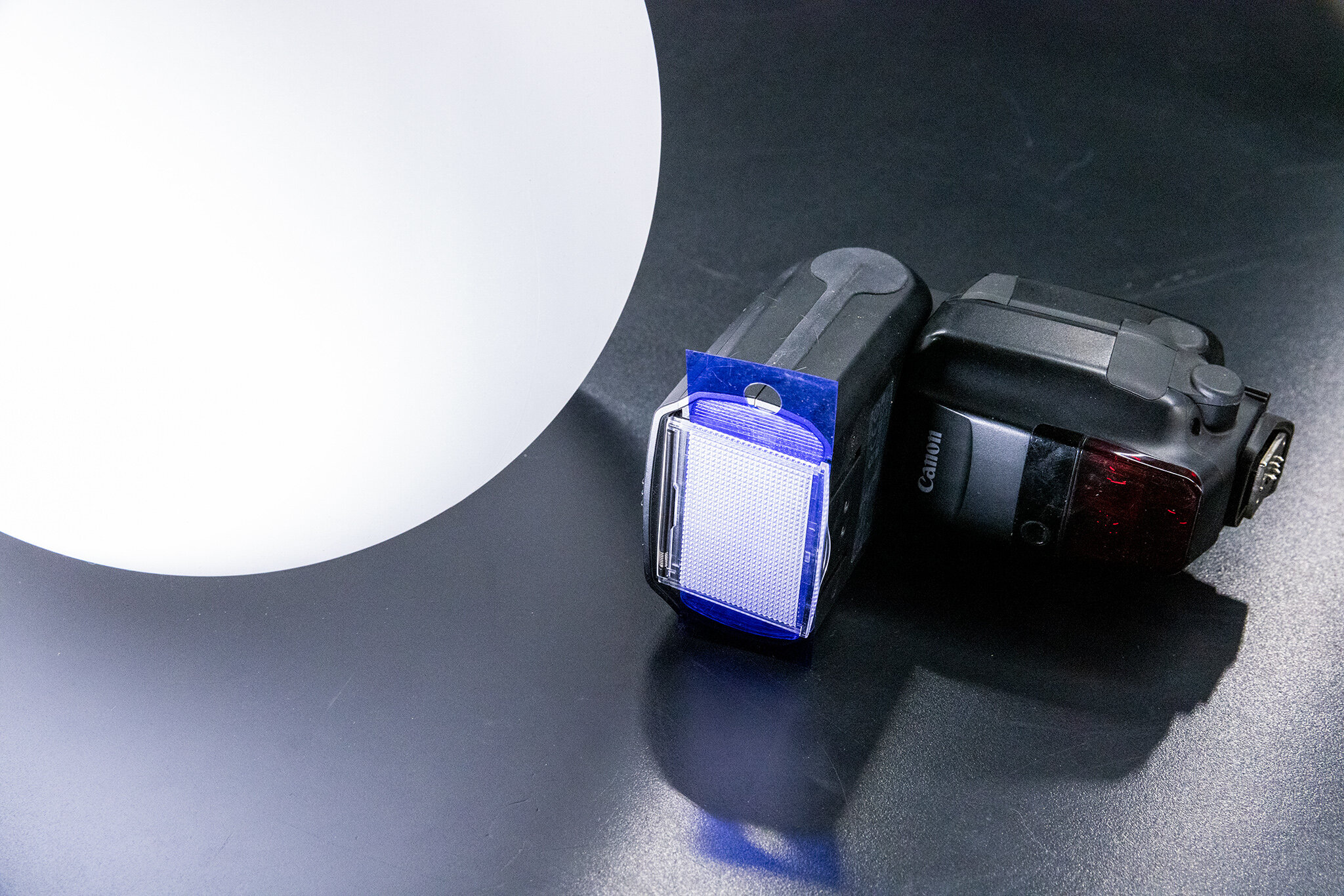Mixing aerial, light-painting, strobes and multi-camera bullet-time
Check out Jen Crane’s work on her website: cirquephysio.com and on her instagram: instagram.com/cirque_physio
The basic idea is this: capturing Jen’s aerial moves using light-painting and bullet-time. She does the moves, I press the buttons :)
Prior to this session, we already had made some light-painting together where I was handing the lights. We also did some constant light shots where she was freely able to move. But on this one, capturing the path of her performance using light was the ultimate goal.
1- Triggering
The 176 cameras are all hooked to Xangle Camera Server and I triggered everything from behind the black wall using my wireless remote.
We tried two ways of capturing the moment:
1.1 - Single exposure, bulb
All cameras are triggered at the same time. Total exposure time is about 10 seconds. That is the time Jen is taking to perform her move. I Manually pop the two strobes using a second remote control
1.2- Composite, interval
Shot #1: strobes popped manually in a bulb exposure.
Shot #2: interval mode (30ms seamless interval, 2 seconds exposure), to get light moving, merged into Premiere (blending mode “lighten”)
2 - Gear
This has been captured using my usual 176-cameras kit (Canon SL1 + 18-55mm lenses at 18mm) on a circular 22’ diameter custom made structure. These are two stills taken from the video. We used 3 small led lights on Jen’s ankles which I set to blue on one side and pink on the other side. I matched these colors on the head of the speedlites using colored gels. During our first session test, I used the bare speedlites with no diffusers, but I found that to be too harsh. This is why I ended up adding big diffusing white domes. The speedlites are inside these domes.
Still from the video at the exact moment where I pop the two strobes.
Right before I turn off the studio lights
2.1 - Lights on the ankles
After multiple tests, we ended up using three small LED lights on each ankles at about 50% power, and that perfect to give us these super nice and flowy light-painting trails. These lights are called “Justech 10pcs SMD5050 RGB Submersible LED Light CR2032 Battery with Remote Control Aquarium and Party Decoration”.
Small LED lights for her ankles
LED lights (attached with velcro tape)
2.2 - Strobes
I used two Canon Speedlites (600exRT) with a blue gel on one, and a pink gel on the other one. To get a bit more diffusion, in put them inside white domes. The thing with 360 degree photography, is that it’s hard to hide the lights, so most of the times, it’s better to simply get them inside the picture. I used the ST-e3-rt to pop the strobes during the exposure (manually). Oh but… what are these diffusing domes?! Garden lights, yep :) I striped out the inside and … lucky me, the speedlite fits perfectly!
2x 600ex RT, ST-e3-rt remote, colored gels
Blue colored gel on one speedlite with one of the two domes
What’s next?
There are some minor things that I’d like to improve at some point if we’d ever do a similar project:
Cover the back half of the white domes with black fabric to make the cameras less visible
Add a third dome and suspend all of them from the ceiling to get a better light quality on the subject
Experiment with different colors
Conclusion
I’ve been working in this studio for four years now, and right at the beginning, we installed some hooks on the ceiling in order to work with circus artists. But somehow, it took me all those years before using these hooks. Jen is the first aerial artist with whom I played in 360 in this studio, and that got me super interested to explore more in this direction.
With Jen Crane, Christian Dion, Guillermo Castellanos, Laurent Siroën, Valentin Lecorps, Abraham Mercado, Andrés de la Rosa, Eric Paré





